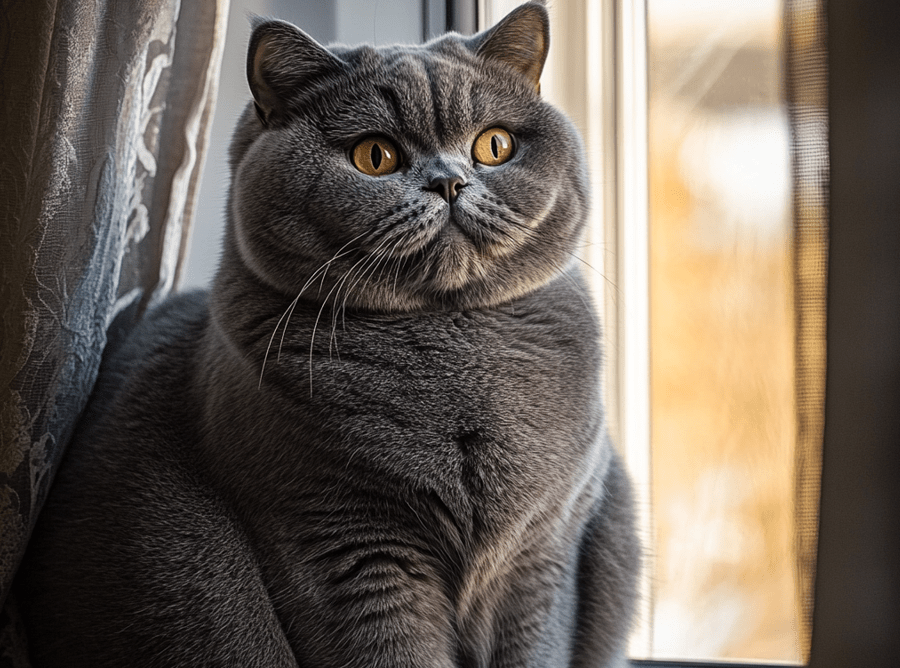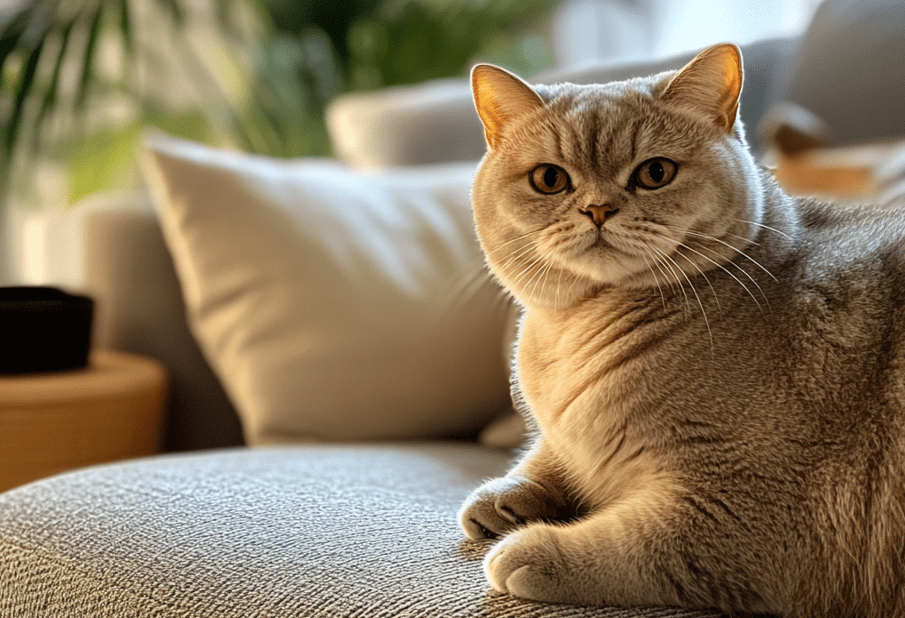
The British Shorthair cat, renowned for its dense, plush coat and charming teddy-bear appearance, is a favorite among cat lovers. However, maintaining that luxurious coat requires regular grooming to keep it healthy and free of mats. Brushing a British Shorthair’s plush coat can be a bonding experience, but it can also be stressful for both cat and owner if not done correctly. This comprehensive guide provides step-by-step instructions, expert tips, and stress-free techniques to brush your British Shorthair’s coat, ensuring a glossy, healthy finish without the fuss.
Why Brushing Your British Shorthair’s Coat Matters
The British Shorthair’s coat is short but incredibly dense, with a thick undercoat that gives it that signature plush texture. Without regular brushing, this coat can accumulate loose hair, dirt, and oils, leading to matting, skin issues, or excessive shedding. Brushing also helps distribute natural oils, promotes circulation, and reduces hairballs, which are common in this breed due to their grooming habits. Most importantly, a stress-free grooming routine strengthens your bond with your British Shorthair, making it a positive experience for both of you.
Benefits of Regular Brushing
Prevents Matting: Keeps the dense coat smooth and tangle-free.
Reduces Shedding: Removes loose hair before it ends up on furniture or clothing.
Improves Skin Health: Stimulates blood flow and distributes natural oils for a shiny coat.
Minimizes Hairballs: Less loose hair means fewer hairballs from self-grooming.
Strengthens Bonding: Gentle brushing builds trust and affection.
Understanding the British Shorthair’s Plush Coat
Before diving into brushing techniques, it’s helpful to understand the unique characteristics of the British Shorthair’s coat:
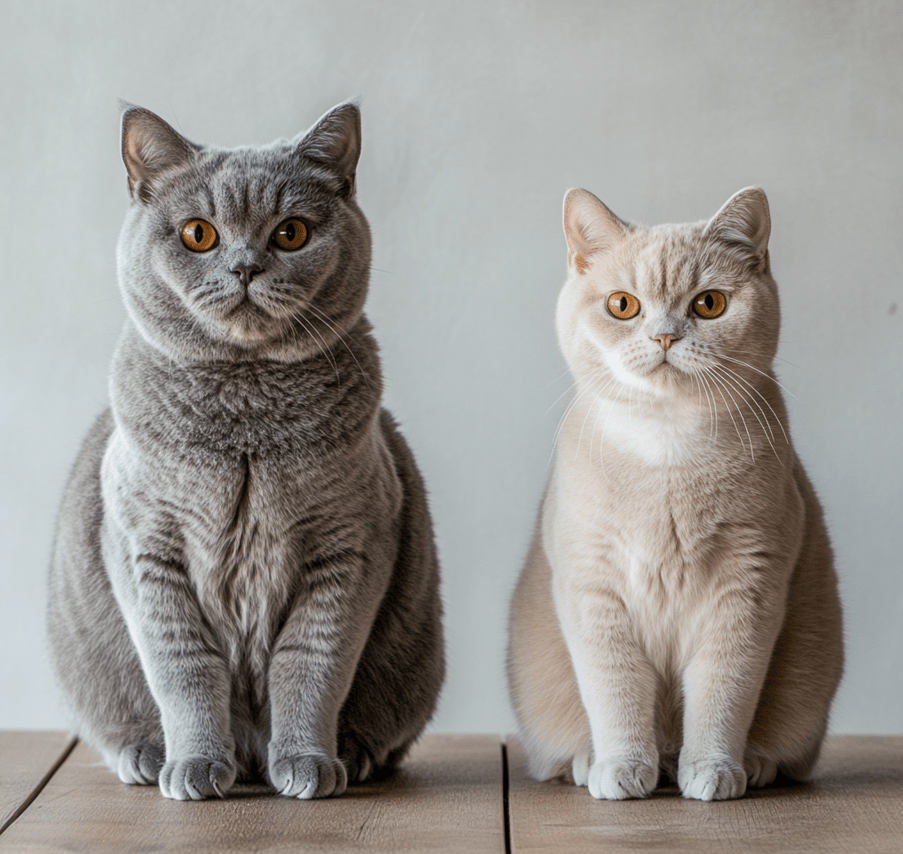
Dense and Short: The coat is short but packed with a thick undercoat, giving it a plush, velvety feel.
Seasonal Shedding: British Shorthairs shed more during spring and fall, requiring extra brushing during these periods.
Self-Grooming Tendency: These cats are meticulous groomers, but they still need help to manage loose hair and prevent matting.
This dense coat requires specific tools and techniques to maintain its beauty without causing stress to your cat.
Tools You’ll Need to Brush a British Shorthair
Choosing the right grooming tools is essential for effective, stress-free brushing. Here’s a list of recommended tools:
Slicker Brush: A gentle slicker brush with fine, short bristles is ideal for removing loose hair and smoothing the coat.
Wide-Tooth Comb: Use a metal or plastic comb to detangle and check for mats, especially in dense areas.
Rubber Grooming Mitt: Great for sensitive cats, as it mimics petting while removing loose hair.
Deshedding Tool (Optional): Tools like the FURminator can reduce shedding but should be used sparingly to avoid over-grooming.
Soft Bristle Brush: Perfect for finishing touches to distribute oils and add shine.
Grooming Wipes: For quick cleanups of dirt or dander between brushing sessions.
Treats and Toys: To reward your cat and make grooming a positive experience.
Tip: Avoid tools with sharp or overly aggressive bristles, as they can irritate your British Shorthair’s sensitive skin.
Step-by-Step Guide to Brushing Your British Shorthair’s Plush Coat
Follow these steps to brush your British Shorthair’s coat effectively while keeping stress to a minimum.
1. Prepare the Grooming Environment
A calm environment sets the stage for a stress-free grooming session.
Choose a Quiet Space: Pick a familiar, quiet area free from loud noises or distractions. A cozy corner of the living room or a bedroom works well.
Use a Non-Slip Surface: Place a towel or mat on a table or your lap to keep your cat comfortable and secure.
Gather Supplies: Have all tools, treats, and a small bowl of water (for wiping tools) within reach to avoid interruptions.
Check Your Mood: Cats are sensitive to human emotions. Approach grooming with a calm, patient attitude.
Tip: Groom during a time when your British Shorthair is relaxed, such as after a meal or nap.
2. Acclimate Your Cat to Brushing
If your British Shorthair is new to grooming or dislikes brushing, introduce the process gradually.
Start with Petting: Stroke your cat gently to relax them, mimicking the brushing motion with your hand.
Introduce Tools Slowly: Let your cat sniff and explore the brush or comb. Rub it gently on their back to familiarize them with the sensation.
Use Positive Reinforcement: Offer treats, praise, or a favorite toy during and after short grooming sessions to build positive associations.
Keep Sessions Short: Begin with 1-2 minute sessions, gradually increasing the duration as your cat becomes comfortable.
Tip: For kittens or new cats, start grooming early to establish a lifelong routine.
3. Brush the Coat in Sections
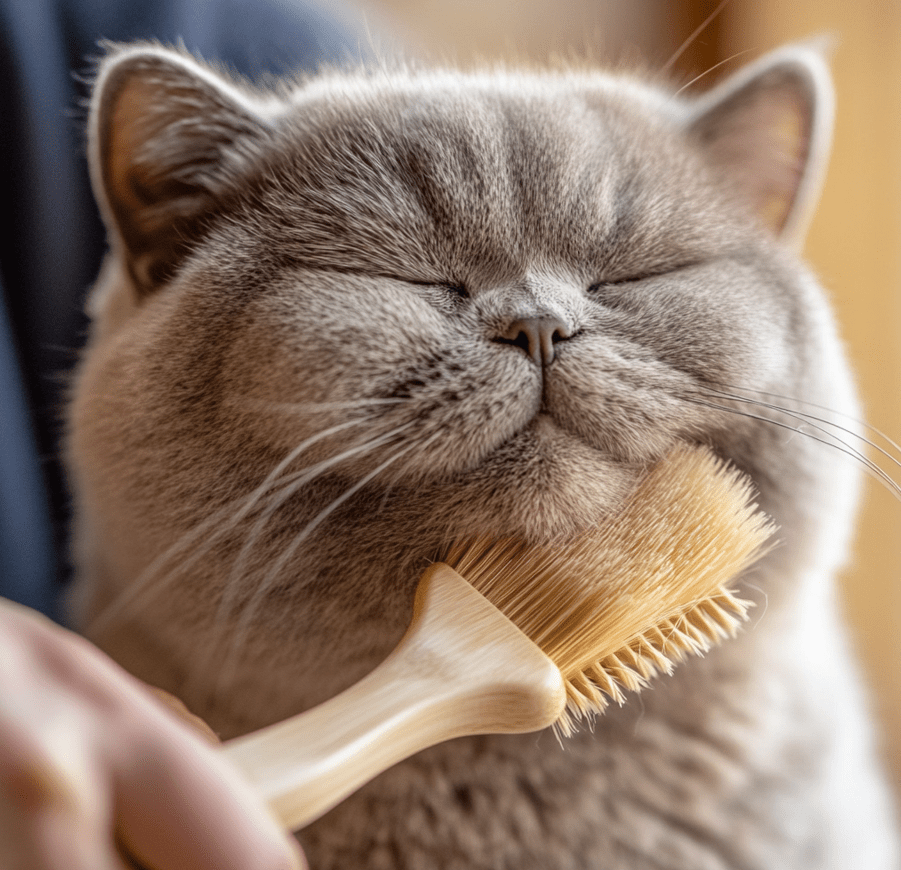
Breaking the grooming process into sections ensures thorough brushing without overwhelming your cat.
Start with the Back: Use a slicker brush or grooming mitt to brush from the neck to the base of the tail, following the direction of hair growth. This area is usually less sensitive.
Move to the Sides: Gently brush the sides and flanks, using short, light strokes to avoid pulling the skin.
Tackle the Belly and Legs: These areas are more sensitive, so use a soft touch. Lift your cat slightly or have them lie on their side if they’re comfortable.
Finish with the Head and Neck: Use a soft bristle brush or your fingers to groom the face, ears, and neck, avoiding the eyes.
Technique Tips:
1.Brush in the direction of hair growth to prevent discomfort.
2.Use short, gentle strokes rather than long, forceful ones.
3.Check for mats or tangles with a wide-tooth comb, especially around the armpits, belly, and hindquarters.
4. Address Mats and Tangles
Mats are less common in British Shorthairs due to their short coats but can occur in dense areas during shedding seasons.
Locate Mats: Run your fingers or a comb through the coat to find any knots or clumps.
Gently Detangle: Hold the base of the mat to avoid pulling the skin, and use a wide-tooth comb to tease it apart. Start from the edges and work inward.
Use Scissors Sparingly: If a mat is too tight, consult a vet or professional groomer. If you must trim, use blunt-tipped scissors and cut parallel to the skin with extreme caution.
Prevent Future Mats: Regular brushing (2-3 times weekly) prevents mats from forming.
Tip: Apply a cat-safe detangling spray (available at pet stores) to loosen stubborn mats, but test for skin sensitivity first.
5. Clean Up Loose Hair
After brushing, remove loose hair from the coat and tools to keep the session tidy.
Use a Damp Cloth: Wipe your cat’s coat with a damp cloth or grooming wipe to pick up stray hairs and dander.
Clean Tools: Rinse brushes and combs with warm water and mild soap to prevent oil buildup. Dry thoroughly to avoid rust.
Vacuum or Sweep: Clean the grooming area to keep your home free of cat hair.
Tip: During heavy shedding seasons, consider brushing outdoors (if your cat is comfortable) to minimize indoor cleanup.
6. Reward and End on a Positive Note
End each session with positive reinforcement to ensure your British Shorthair associates grooming with pleasant experiences.
Offer Treats: Give a small, healthy treat, like freeze-dried chicken or a vet-approved option.
Play or Cuddle: Engage in a short play session or offer gentle petting to reinforce bonding.
Monitor Mood: If your cat seems stressed, stop early and try again later. Never force a session.
Tip: Keep a consistent grooming schedule (e.g., every Tuesday and Friday) to build a routine your cat can predict.
How Often Should You Brush a British Shorthair?
The frequency of brushing depends on your cat’s shedding patterns and coat condition:
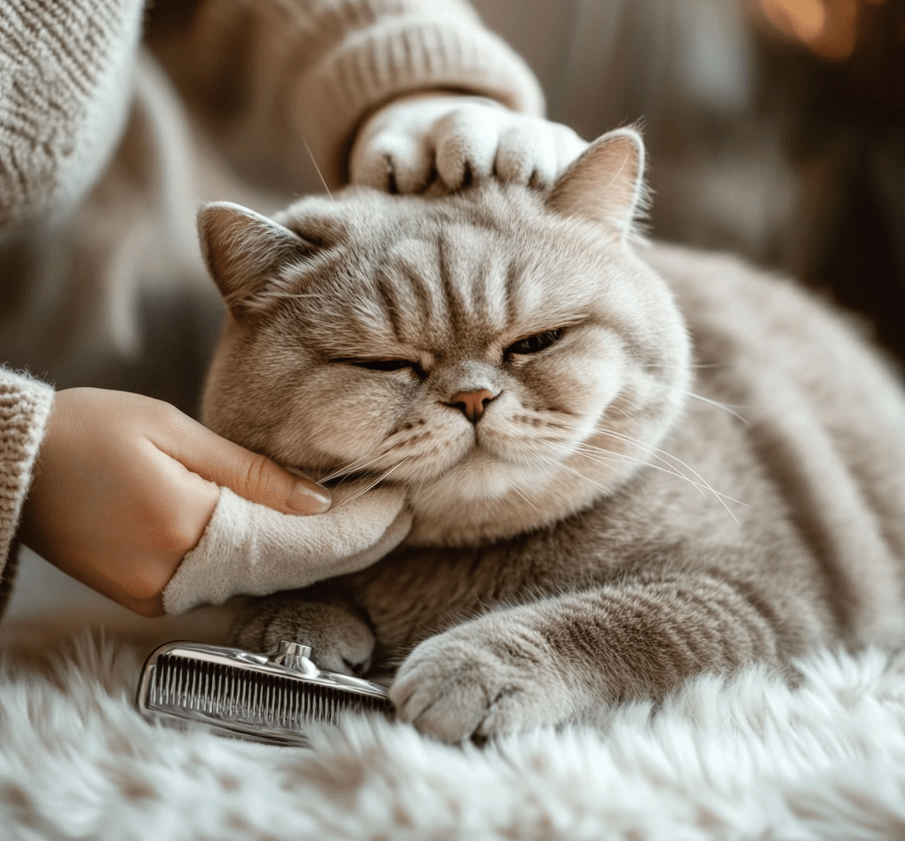
Regular Maintenance: Brush 2-3 times per week to keep the coat healthy and reduce shedding.
Shedding Seasons (Spring/Fall): Increase to daily brushing to manage loose hair and prevent hairballs.
Senior Cats or Long-Term Indoor Cats: Older British Shorthairs or those with reduced grooming ability may need more frequent brushing (3-4 times weekly).
Tip: Adjust brushing frequency based on your cat’s needs. If you notice excessive shedding or skin changes, consult a vet to rule out health issues.
Tips for Stress-Free Grooming
British Shorthairs are generally easygoing, but some may resist grooming. These tips help keep sessions calm:
Watch for Stress Signals: Dilated pupils, flattened ears, hissing, or tail flicking indicate discomfort. Pause and try again later.
Use Distractions: Play soft music or offer a lickable treat (like a Churu tube) to keep your cat occupied.
Groom in Short Bursts: For anxious cats, break grooming into multiple 2-3 minute sessions throughout the day.
Involve a Second Person: If your cat is particularly fussy, have someone gently hold or pet them while you brush.
Consult a Professional: If grooming remains stressful, a professional groomer or vet can offer guidance or handle sessions.
Tip: Never punish or restrain your cat forcefully during grooming, as this can damage trust and make future sessions harder.
Common Grooming Mistakes to Avoid
To ensure a positive experience, steer clear of these pitfalls:
Using the Wrong Tools: Harsh brushes or human hair tools can irritate the skin or damage the coat.
Brushing Too Aggressively: Rough strokes can cause pain and make your cat wary of grooming.
Ignoring Skin Health: Check for redness, flakes, or bald spots during brushing, as these may indicate allergies, parasites, or infections.
Skipping Regular Sessions: Infrequent brushing leads to matting, shedding, and hairballs, especially during shedding seasons.
Forcing a Stressed Cat: Pushing through a session when your cat is upset can create long-term grooming aversion.
Tip: If you’re unsure about grooming techniques, ask your vet or a professional groomer for a demonstration.
When to Seek Veterinary Advice
While brushing is a routine task, certain signs during grooming may warrant a vet visit:
1.Excessive shedding or bald patches
2.Red, irritated, or scabby skin
3.Unusual lumps, bumps, or sores
4.Persistent matting despite regular brushing
5.Behavioral changes, such as aggression or lethargy during grooming
These could indicate underlying issues like allergies, thyroid problems, or skin infections that require medical attention.
Additional Coat Care Tips for British Shorthairs
Beyond brushing, these practices support your British Shorthair’s coat health:
Bathing (When Necessary): British Shorthairs rarely need baths, but if their coat becomes oily or dirty, use a cat-safe shampoo and ensure thorough drying. Bathe no more than once every 1-2 months, if needed.
Nail Trimming: Trim nails every 2-3 weeks to prevent scratching during grooming. Use cat-specific clippers and avoid the quick (pink area).
Ear and Eye Cleaning: Check ears weekly for wax or debris and clean with a vet-recommended solution. Wipe tear stains around the eyes with a damp cloth.
Healthy Diet: Feed high-quality cat food rich in omega-3 fatty acids, protein, and vitamins to promote a glossy coat and healthy skin.
Flea and Parasite Control: Use vet-approved preventives to protect against fleas, ticks, or mites, which can irritate the skin and coat.
Tip: Regular vet checkups ensure your cat’s overall health, which directly impacts coat quality.
Conclusion
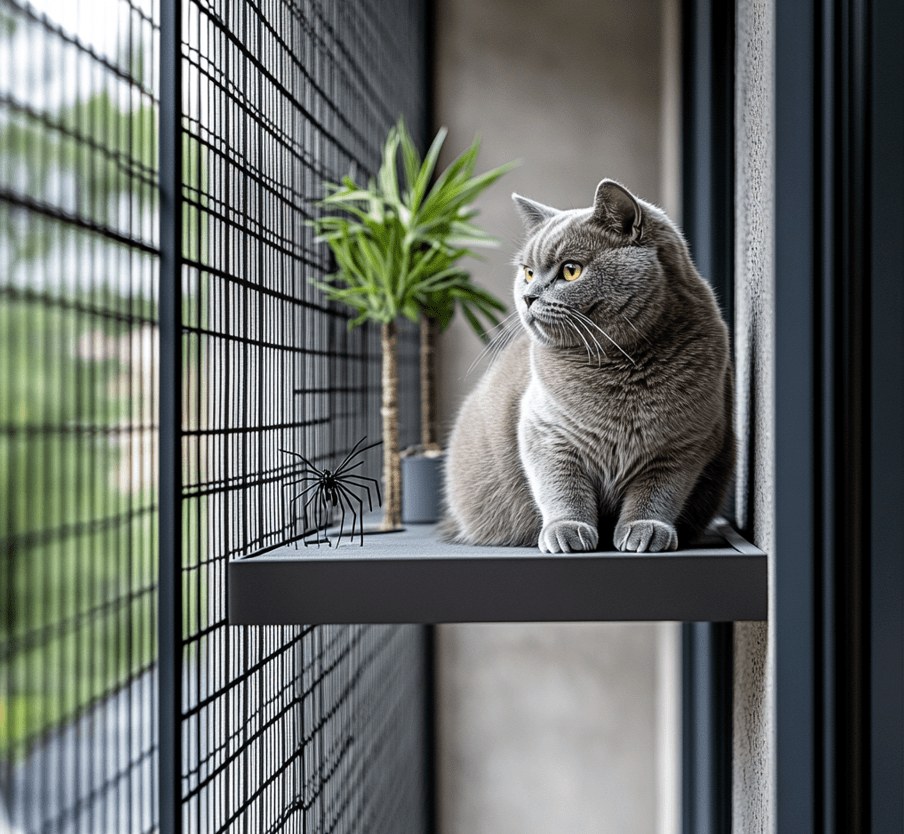
Brushing your British Shorthair’s plush coat doesn’t have to be a stressful chore. With the right tools, techniques, and a patient approach, you can keep your cat’s coat healthy, shiny, and free of mats while strengthening your bond. Regular grooming not only enhances their appearance but also supports their overall well-being by reducing shedding, preventing hairballs, and promoting skin health.
This guide equips you with everything you need to master stress-free grooming for your British Shorthair. By making brushing a positive, routine part of their care, you’ll ensure your feline friend looks and feels their best for years to come.

